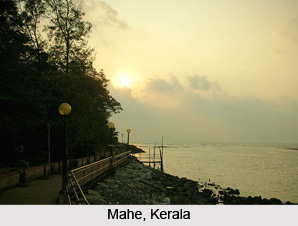 History of Mahe dates back to 18th century when a trading post was set up by the French at Calicut. In the year 1701, a representative of French East India Company, known as Mollandin, proposed an idea of establishing an attractive site for trading purpose. Consequently an agreement was made between Vazhunnavar of Badagara and Mollandin for the establishment of a trade centre along the estuary of a river called as Mayyazhipuzha. However, within two years of the agreement the relation between the French and Vazhunnavar of Badagara got tensed. The French were defeated and were forced to retreat to Calicut. The place was recaptured by the French in the year 1725 in an expedition led by De Pardaillan and once again the French post was set up at Mahe. The credit of this recapture was given to a young captain, named Mahe De Labourdannais, who was a part of De Pardaillan and made the endeavour successful with his skill and intelligence. As the local name of the place had close resemblance with the name of the captain, De Pardaillan renamed the place as Mahe to pay tribute to their brave captain.
History of Mahe dates back to 18th century when a trading post was set up by the French at Calicut. In the year 1701, a representative of French East India Company, known as Mollandin, proposed an idea of establishing an attractive site for trading purpose. Consequently an agreement was made between Vazhunnavar of Badagara and Mollandin for the establishment of a trade centre along the estuary of a river called as Mayyazhipuzha. However, within two years of the agreement the relation between the French and Vazhunnavar of Badagara got tensed. The French were defeated and were forced to retreat to Calicut. The place was recaptured by the French in the year 1725 in an expedition led by De Pardaillan and once again the French post was set up at Mahe. The credit of this recapture was given to a young captain, named Mahe De Labourdannais, who was a part of De Pardaillan and made the endeavour successful with his skill and intelligence. As the local name of the place had close resemblance with the name of the captain, De Pardaillan renamed the place as Mahe to pay tribute to their brave captain.
As per the annexure of the book of Martineau which narrates the origin of Mahe, it has been mentioned that the place was previously called as Maye. It was only after its recapture by De Pardaillan the place came to be known as Mahe. The English and the French were involved in seven years of fight which ended in 1760. In the war the French only retained their possession of Mahe and lost all other settlements in the western coast.
Mahe was conquered by the English in 1761 and was transferred under the control of Rajah of Kadathanadu. However Kadathanadu was then attacked by Hyder Ali from Mysore. Meanwhile the English transferred the possession of Mahe to the French as per their treaty made in Paris. The Anglo-French war commenced in the year 1779 and the French lost the possession of Mahe. In 1783 the French were given their Indian territories back by the English and thus Mahe also went under their control in 1785. The possession of Mahe changed many hands and finally came to the French in the second decade of 18th century.
Following the independence of India in 1947, Mahe also hosted several freedom struggle movements. A large scale freedom movement arose in Mahe on 20th October 1948 accompanied by street parades of enraged crowd, raids on government offices and buildings and burning of records and furniture. In the presence of thousands of people, the Union Flag was hoisted over the administrative office on 23rd October 1948. This struggle took an intense turn during 1954 with a number of violent incidents. The de facto transfer of Mahe`s possession to the Government of India took place on 1st November 1954 whereas its de jure transfer occurred on 16th August 1962.



















